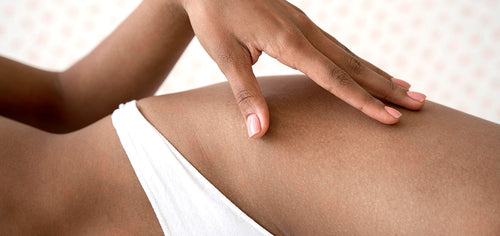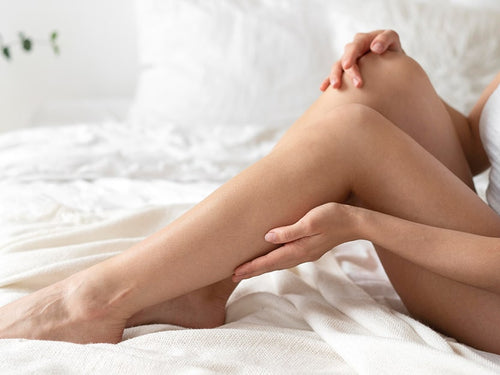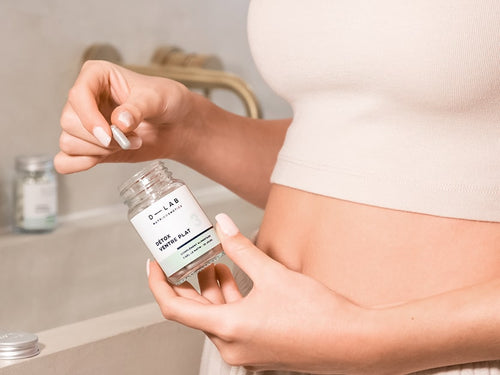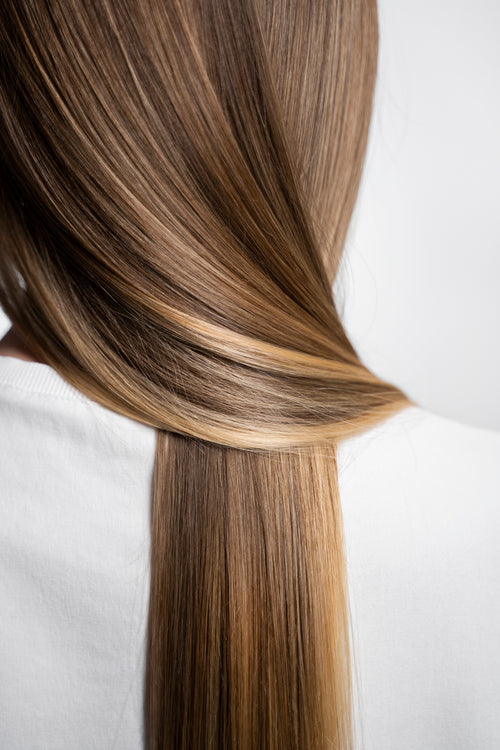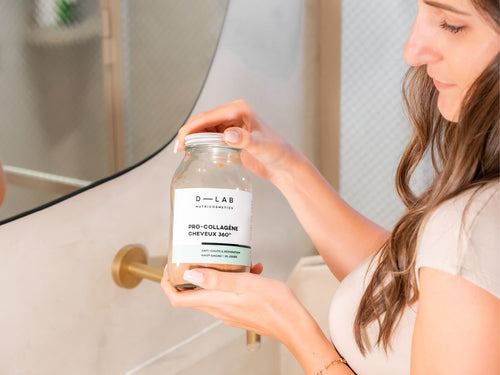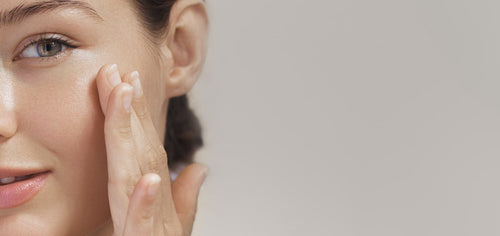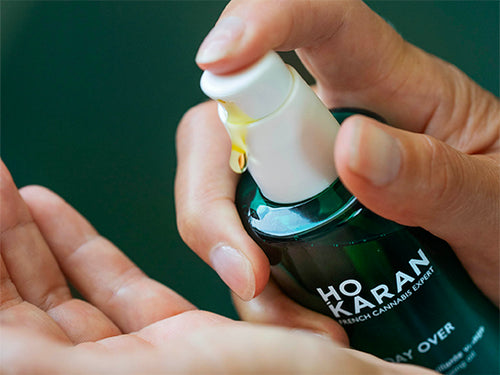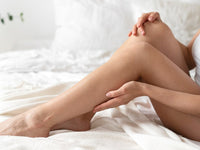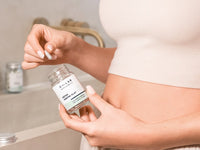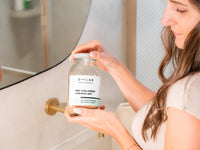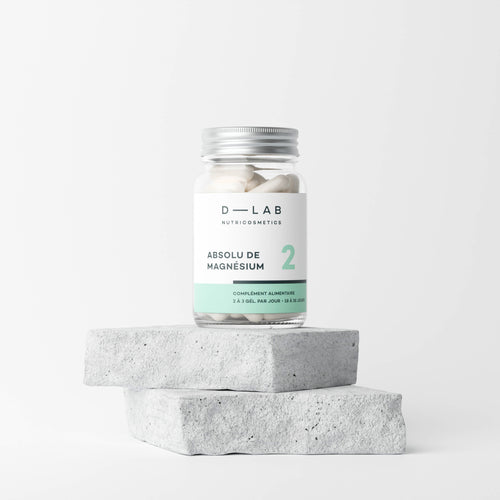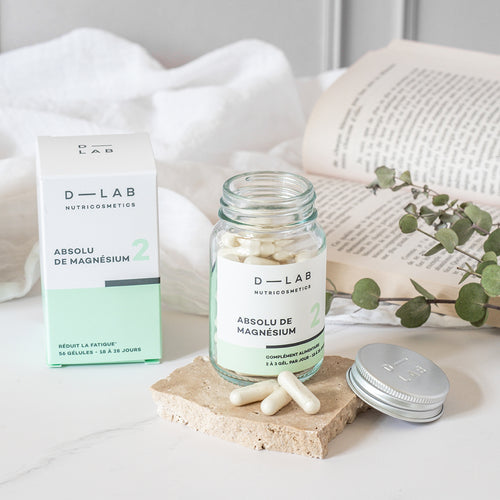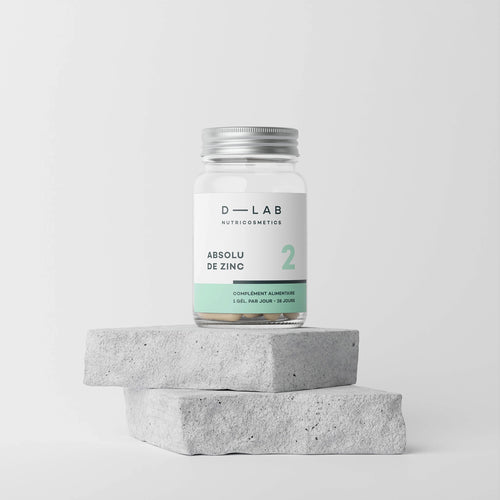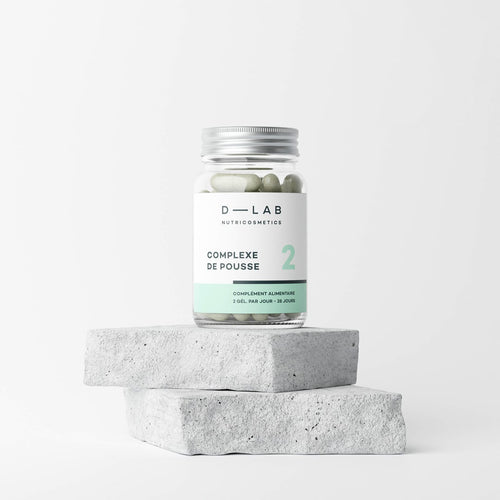
Water retention in the legs, also called edema, can occur due to a buildup of fluid in the tissues. This condition often manifests as swelling and a feeling of heaviness in the legs.
Several factors can contribute to this phenomenon, including poor circulation, a diet too high in salt, lack of physical activity, or hormonal imbalances.
To combat water retention and regain light legs, it is recommended to adopt healthy lifestyle habits, engage in regular physical activity, monitor your diet, and use quality dietary supplements, such as the water retention supplements from D-LAB NUTRICOSMETICS, like the Complexe Circulation Active or the Duo Super-Drainant.
They are specially formulated to help fight water retention in the legs, as well as to stimulate circulation and promote the elimination of excess fluids.
Summary
I. Understanding water retention in the legs
Water retention, also known by the medical term "edema," is a phenomenon that can occur in various areas of the body, including the legs, arms, feet and ankles, abdomen, and even the face. This condition occurs when the body retains an excessive amount of fluid in its tissues, leading to noticeable swelling.
If you want to learn more about thighs, read our article water retention thighs.
Water retention is generally associated with unpleasant sensations of heaviness and swelling, and can sometimes cause pain. It is essential to understand this phenomenon well in order to adopt the right practices and thus effectively combat water retention.
Definition and mechanisms
Water retention in the legs, a condition often referred to as edema, is the result of an excessive accumulation of fluids in the tissues. This situation can have several causes.
It may be problems related to poor blood circulation, causing blood to stagnate in the veins.
Hormonal imbalances, particularly common during menstrual fluctuations, pregnancy, or menopause, can also be a cause.
Physical inactivity, by limiting the stimulation of blood and lymph circulation, also promotes this phenomenon. Finally, an inappropriate diet, particularly one too high in salt, can cause water retention.
Common symptoms
Water retention in the legs mainly manifests as a feeling of heaviness and swelling. The legs may also be sensitive to touch and appear paler than usual. In some cases, visible signs such as orange peel skin or cellulite may also appear.
II. The main causes of water retention
Hormonal factors
Certain periods in a woman's life are more prone to water retention, especially during the menstrual cycle, pregnancy, or menopause. This is due to hormonal fluctuations that can disrupt the body's water regulation system. For more details on the causes of water retention, see our dedicated article.
Why do hormones affect water retention?
Hormones play a crucial role in the regulation of bodily fluids. Hormonal fluctuations, particularly of estrogen and progesterone, can disrupt this balance, thereby promoting water retention.
During menstrual cycle periods, pregnancy, or menopause, these hormonal variations can lead to increased permeability of blood vessels, causing fluid accumulation in the tissues. This condition often results in swelling and a feeling of heaviness, particularly in the legs. But then, what to do about hormonal water retention?
Poor blood circulation
Blood circulation works thanks to a complex network of blood vessels that carry blood throughout the body. The heart, the central organ of this system, pumps oxygenated blood from the lungs to all the cells of the body through the arteries.
Then, the deoxygenated blood returns to the heart through the veins to be reoxygenated in the lungs. Poor blood circulation can lead to fluid stagnation, thereby promoting water retention in the legs. It is crucial to maintain good circulation to avoid this phenomenon and prevent swelling.
Poor blood circulation can indeed promote water retention in the legs. When blood does not circulate properly, it tends to stagnate in the veins, which can lead to noticeable swelling of the surrounding tissues. This can be due to various factors such as physical inactivity, prolonged standing, or venous disorders.
Lack of physical activity
Lack of physical activity is a major factor in water retention in the legs. Movement, indeed, plays a crucial role in stimulating blood and lymphatic circulation.
By engaging in regular physical activity, such as walking or cycling, one facilitates the elimination of excess fluids, thereby helping to reduce edema.
Dietary factors
An inappropriate diet can play a significant role in water retention in the legs. Consuming foods high in salt is particularly problematic, as sodium promotes fluid retention in the tissues. This imbalance can lead to swelling and a feeling of heaviness in the legs.
Along the same lines, insufficient protein intake can also contribute to water retention. Proteins are essential for maintaining optimal water balance in the body, notably by helping to regulate blood volume and prevent fluid leakage into tissues.
It is therefore crucial to prioritize a balanced diet, rich in protein and low in salt, to reduce the risks of water retention.
III. Signs of excess water in the legs
Signs and symptoms
What are the first signs of water retention in the legs?
The first signs of water retention in the legs are swelling and a feeling of heaviness. In some cases, visible signs such as orange peel skin may also appear. Also read, water retention in the knee.
What are the associated signs and symptoms?
The signs and symptoms of water retention in the legs include swelling, a feeling of heaviness, tenderness to the touch, and sometimes the appearance of visible signs such as orange peel skin.
Swollen legs
If you notice swelling in your legs, you may be suffering from water retention. In this case, it is recommended to consult a healthcare professional for an accurate diagnosis. Water retention can also affect other parts of the body, such as water retention in the face.
How to quickly reduce swollen legs?
To quickly reduce leg swelling, it is recommended to elevate the legs, apply cold compresses, perform ankle flexion-extension exercises, and take appropriate dietary supplements. Water retention can also affect other parts of the body, such as water retention in the feet.
Heavy legs
If you feel a heaviness in your legs, especially at the end of the day, it may be a sign of water retention. Once again, it is best to consult a healthcare professional to get a proper diagnosis and treatment.
What to do to relieve heavy legs?
To relieve heavy legs, it is recommended to adopt a healthy lifestyle, including a balanced diet, regular physical activity, and the use of suitable dietary supplements such as the Programme Action-Capitons or the Duo Super-Drainant.
These solutions can help improve blood and lymphatic circulation, thereby promoting the elimination of excess fluids and reducing the feeling of heaviness in the legs.
IV. Solutions to combat water retention
Adopt a balanced diet
A balanced diet is essential to prevent and combat water retention in the legs. It is advisable to favor foods rich in potassium, such as fruits and vegetables, which promote the elimination of water through the kidneys.
A good anti-water retention meal could start with a salad made of vegetables rich in water and potassium, such as cucumbers, spinach, and tomatoes.
For the main course, a grilled fish fillet accompanied by quinoa and green vegetables, such as broccoli and green beans, is ideal. These foods are naturally rich in fiber and minerals that promote the elimination of excess fluids.
For dessert, a fresh fruit salad, including citrus fruits, berries, and melons, perfectly completes the meal. These fruits are not only delicious but also hydrating and diuretic, helping to reduce swelling and the feeling of heaviness in the legs.
How to remove this excess water in the legs?
To eliminate excess water, it is also recommended to drink plenty of water, limit salt intake, and engage in regular physical activity. Dietary supplements from D-LAB NUTRICOSMETICS, such as Anti-cellulite Collagen, can also help you. It will help to drain excess water and fight dimples and orange peel skin.
Engage in regular physical activity
Regular physical activity helps stimulate blood and lymph circulation, which facilitates the elimination of excess fluids. Activities such as walking, cycling, or swimming are particularly recommended.
Natural remedies and diuretic plants
Natural remedies and diuretic plants can play a crucial role in managing water retention in the legs. Among the most recognized plants for their diuretic properties are dandelion, fennel, green tea, and horsetail. These plants promote the elimination of excess fluids through the kidneys, thus helping to reduce swelling and the feeling of heaviness in the legs.
- Dandelion is rich in potassium, an essential mineral that helps balance sodium levels in the body, thereby reducing water retention.
- Fennel, for its part, is known for its anti-inflammatory and diuretic properties, facilitating the elimination of toxins.
Incorporating these plants in the form of herbal teas or dietary supplements can therefore be an effective natural solution to combat water retention. However, it is always recommended to consult a healthcare professional before starting any new treatment, even natural ones, to ensure it is suitable for your specific needs.
Suitable dietary supplements
The water retention and cellulite supplements from D-LAB NUTRICOSMETICS, made from high-quality natural ingredients, are specially formulated to help combat this phenomenon. Among these products, the Complexe Circulation Active stands out. With its precise, powerful, and 100% green and clean formula, it is designed to stimulate blood circulation. It thus promotes the elimination of excess fluids, relieves the sensation of heaviness, and helps to regain light legs.
Discover the range
V. Importance of a comprehensive approach
Combining diet, exercise, and supplements
To efficiently combat water retention in the legs, it is crucial to adopt a comprehensive strategy. This should include a balanced diet rich in potassium, regular physical activity to stimulate blood and lymphatic circulation, and the use of quality dietary supplements.
Relaxation techniques and general well-being
In addition to diet, physical exercise, and dietary supplements, relaxation techniques such as yoga or meditation are also effective in reducing stress, which is often associated with water retention. They help improve blood circulation, thereby promoting the elimination of excess fluids. Taking care of overall well-being, ensuring quality sleep, maintaining adequate hydration, and avoiding tobacco and alcohol can help prevent and manage water retention in the legs. Thus, a comprehensive and balanced approach is ideal for combating this phenomenon.
Frequently Asked Questions
What is the best dietary supplement for water retention?
The best treatment for water retention depends on the underlying cause. In general, a comprehensive approach combining a balanced diet, regular physical activity, and the use of suitable dietary supplements can be effective. A good dietary supplement for water retention is made up of standardized and concentrated active ingredients, bio-sourced, manufactured in France with a high environmental awareness.
What are the main causes of excess water in the legs?
The main causes of water retention in the legs are hormonal imbalances, poor blood circulation, lack of physical activity, and an inappropriate diet.
What is water retention in the legs and how does it manifest?
Water retention in the legs is a condition that occurs when the body stores excess water in the tissues. It usually manifests as a feeling of heaviness and swelling.
How to adjust your diet to reduce water retention?
It is recommended to prioritize a diet rich in potassium and protein, and to limit the consumption of salt and processed foods.
Which exercises are most effective for stimulating circulation?
Cardiovascular exercises, such as walking, cycling, or swimming, are particularly effective for stimulating circulation and reducing water retention.
How to incorporate natural remedies into your daily routine?
Natural remedies, such as diuretic plants, can be incorporated into the daily routine in the form of herbal teas or dietary supplements.
How can dietary supplements help combat these excesses of water?
D-LAB NUTRICOSMETICS dietary supplements, such as Anti-Cellulite Collagen, are formulated to help stimulate circulation and promote the elimination of excess fluids, which can help reduce water retention as well as cellulite. To learn more, read our article on what cellulite is or how to fight cellulite.
How can natural ingredients help reduce retention?
Natural ingredients, such as diuretic plants, can help stimulate diuresis and reduce fluid accumulation in tissues.
How to prevent swollen legs through a healthy and balanced diet?
A healthy and balanced diet, rich in potassium and protein, and low in salt and processed foods, can help prevent water retention.
What exercises or lifestyle habits can help prevent heavy legs?
Regular physical activity, such as walking, cycling, or swimming, as well as adopting a healthy lifestyle, can help prevent water retention.



